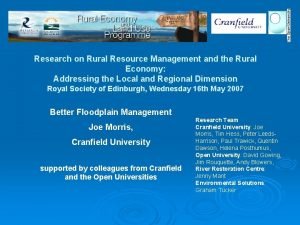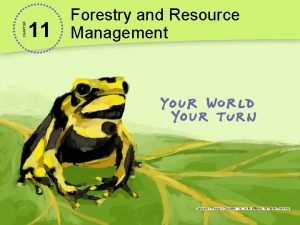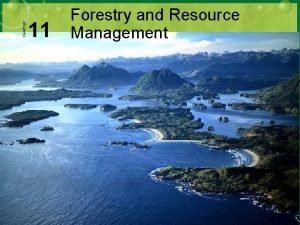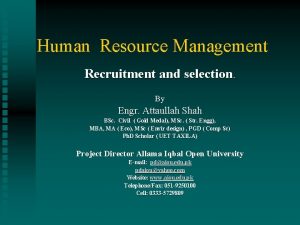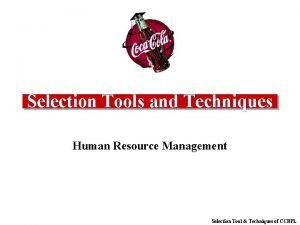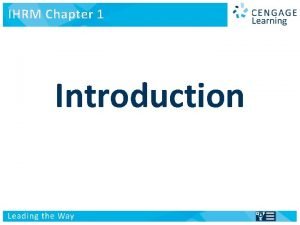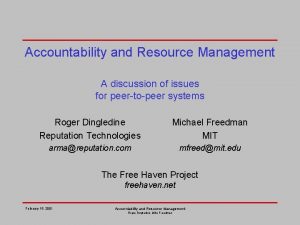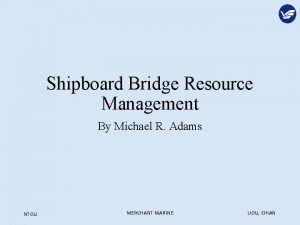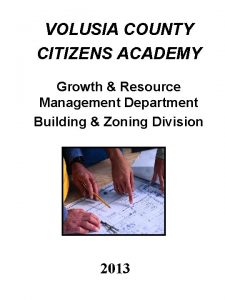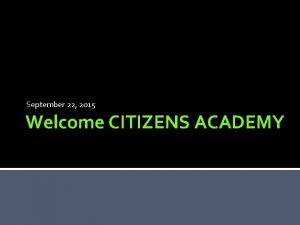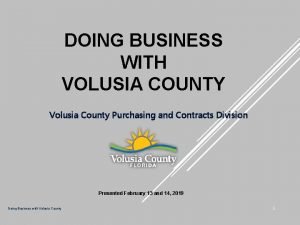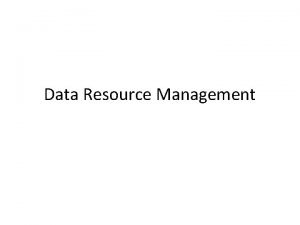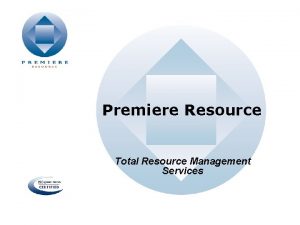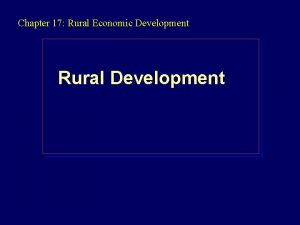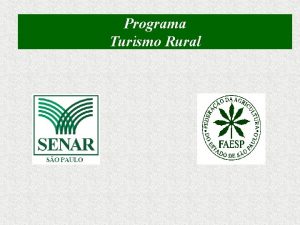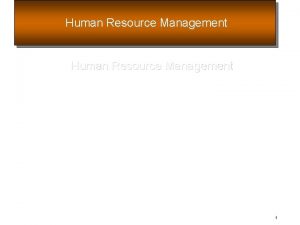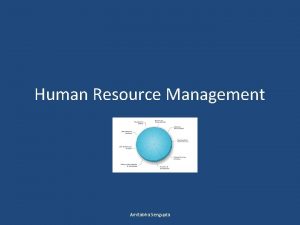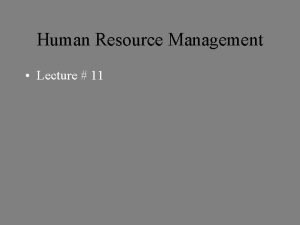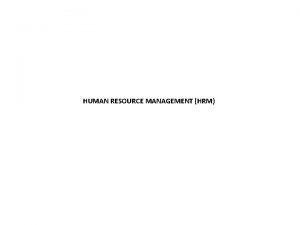Research on Rural Resource Management and the Rural


























- Slides: 26

Research on Rural Resource Management and the Rural Economy: Addressing the Local and Regional Dimension Royal Society of Edinburgh, Wednesday 16 th May 2007 Better Floodplain Management Joe Morris, Cranfield University supported by colleagues from Cranfield and the Open Universities Research Team Cranfield University: Joe Morris, Tim Hess, Peter Leeds. Harrison, Paul Trawick, Quentin Dawson, Helena Posthumus, Open University: David Gowing, Jim Rouquette, Andy Blowers, River Restoration Centre: Jenny Mant Environmental Solutions: Graham Tucker

Schedule Sustainable Development, natural capital and ecosystem services Ø Floodplains – suitable case for treatment Ø Implications for Policy Ø Conclusions and Acknowledgements Ø

Objectives: social, economic, environmental Resources and limits: natural physical financial human social Governance, Scale Development options: policies programmes projects

Ecosystem Functions, Uses and Values Indicators Hydrological, ecological, physical, chemical… Natural Capital: Ecosystem Functions: land water air biosystems production regulation carrier habitat Information Social and economic Ecosystem Uses, goods and services: Eg: Agriculture, Industry, Nature conservation, Tourism, Recreation Ecosystem Values: meeting stakeholder purposes and preferences: social. economic, environmental Stakeholders Property rights

Millennium Ecosystem Assessment

Policy Challenge? Ø Ø Ø Public policy: ‘SD’ - is it possible? What’s the link between natural capital, ecosystems functions and well-being? What ‘understandings’ are required from physical, natural and social sciences? Will a better understanding lead to action and outcomes? What policies and other actions are needed to do this and deliver SD? What’s the role of Governance?

The Case of Flood Plains: level tracts of land liable to inundation by river water Ø Ø Regional and local significance Changing priorities and concerns ? Reappraisal of land water management ? Policy realignment and integration ?

RELU Project: Integrated land water management in flood plains Research Questions : Ø is it possible to achieve multiple objectives in ways which are appealing to major stakeholders, especially farmers? Ø what data bases and appraisal methods are needed to support decision making? Ø what are the best ways of achieving the widespread adoption of integrated management solutions?

Approach historical analysis of the dynamics of change on selected Agricultural Flood Defence Schemes implemented during period 1960 -1980. Ø 40 year historical perspective in order to look forward Ø building on integration Ø

Conceptual Framework

A Case Example: Beckingham Marshes History: • prior WWII: grassland & marsh, willow production • 1960 -70: improved drainage, pumps, emergency flood storage • 1970 -2000: arable production • 2005: RSPB plan re-conversion to grassland for lapwings, increase water table levels

Hydrological Component Classification of floodplain by degree of hydraulic control Inflow Outflow Uncontrolled inflow Fixed controlled inflow Uncontrolled gravity return Fixed controlled gravity return Controlled return (sluices / pumps) Beckingham Marshes Variable controlled inflow

Hydrological component Dupuit-Forcheimer based model of the interaction between soil typology, climate water management regime and the water table:

Land Management Component - Agriculture Ø Water regimes: l l Flooding Waterlogging Frequency Seasonality Duration Depth Standards of Agricultural Drainage Low Relative profitability of farming systems? ? ? High

Beckingham Marshes Wetness of soils Land use GIS for mapping natural capital and ecosystems functions uses and values

Ecological component • Scale International – Ramsar Convention, Habitats Directive • National – BAP priorities, SSSIs • Regional / County – County BAPs, SINCs • Local / Parish – species-rich hedgerows • • Significance of the population habitat • Threat

Ecological component Modelling the effects of water regimes on biodiversity MG 13: Inundation grassland → inundation pasture habitat Water table depth below ground level, m Months, jan - dec

Stakeholder analysis Stakeholder interests in Beckingham Marshes Function Use Stakeholders Values (outcomes) Production Agricultural production Farmers, Defra Economic gains from crop & livestock production Regulation Flood water storage, drainage, carbon cycling? EA-FRM, IDB, farmers, local industry, RSPB Avoided damage due to flooding, tradeable services Habitat Maintenance and enhancement of bio-diversity RSPB, EA-CONS, On. Trent, Notts WT, local residents Contribution to BAP targets Carrier Transport and settlements Local residents, local industry, farmers, local authority Location for housing, roads, local industry: Property and service values, costs of alternatives Information Amenity, landscape, recreation, history RSPB, local residents, local authority, Enjoyment of the countryside and related benefits: willingness to pay

Beckingham Marshes: Stakeholder analysis: water level management

Integration : Land use and habitat matrix Land use and habitat classification by flood and soil water regimes Winter flooding only Flooding at any time of year Drainage : Rapid Moderate Slow Rapid Short duration flooding Arable, pasture, hay meadow, woodland Pasture, woodland Hay meadow, pasture, woodland Woodlan, pasture Swamp, pasture, woodland Medium duration flooding Hay meadow, pasture, woodland Pasture, swamp, woodland Pasture, woodland, swamp Swamp, pasture Long duration flooding Pasture, woodland Swamp, pasture, woodland Swamp Moderate Slow

Modelling land water scenarios*: Beckingham : Scenarios Dominant land use > Arable farming Flood storage Wetlands Water management regime > Rapid drainage, low flood frequency Rapid drainage, high flood frequency Slow drainage, high flood frequency Agricultural production H M L Bio-fuel crops H L M Regulation Flood water storage M H L Habitat Biodiversity target L M H Road network/industry H M L Recreation L L H Education L L H Function Production Carrier Information Use *Based on monetary values

Outcomes of RELU Flood Plain Project Demonstrate the feasibility and benefit of an integrated approach Ø Contribute to guidance on design and appraisal of land water management options in floodplains Ø Identify scope for joined up policy and action Ø

Research Based Policy : informing choices High Ø Ø Develop understanding amongst stakeholders of ecosystem services and limits Derive preferences and values for ecosystem services using a range of methods Use ‘what if’ interactions supported by ‘modelling’ Develop for different scales of governance Low Understanding Expert based modelling Participatory modelling Participation Anecdotal elitism Participatory discussion Low Key elements: Knowledge exchange Multi-criteria, limits/thresholds Collective choice High

General Conclusions – drawn from the floodplain Ø Ø Ø Policies for SD must be set within an ecosystems framework of capital, functions, uses and values Multiple ‘sciences’ are needed to understand the trade- offs, synergies and limits involved Diverse collaborations and long term commitment are needed Scale, temporal and spatial, is critical Need a practical framework for a spatially differentiated ecosystems based approach to joined- up policy management and development planning Need regional and local ‘experiments’ to show it can make a difference

Credits Research Team Cranfield University: Joe Morris, Tim Hess, Peter Leeds-Harrison, Paul Trawick, Quentin Dawson, Helena Posthumus, Open University: David Gowing, Jim Rouquette, Andy Blowers, River Restoration Centre: Jenny Mant Environmental Solutions: Graham Tucker Thanks to: various participating stakeholders, especially farmers RELU Programme Team UK Research Councils, and Defra and SEERAD

Reference material Ø Ø Ø Ø Contact email: j. morris@cranfield. ac. uk Project website: http: //www. silsoe. cranfield. ac. uk/iwe/expertise/relu. htm: Selected references: Defra (2004) Making Space for Water. Developing a new government strategy for flood and coastal erosion risk management in England. London: Department for Environment, Food and Rural Affairs Millennium Ecosystem Assessment (2005). Reports on http: //www. maweb. org/en/index. aspx Morris, J, Bannister, N. , Hess, T. M. , Gowing, D. J. G. , Leeds-Harrison, P. B. , Vivash, R. , Wade, M. (2004) Integrated Washlands for Flood Defence and Biodiversity, Report to English Nature and Defra. English Nature Research Report Series No. 598. Peterborough: English Nature Penning-Rowsell E, Johnson C, Tunstall S, Tapsell S, Morris J, Chatterton J, and Green C, (2006) The Benefits of Flood and Coastal Risk Management. (i) A Manual of Techniques , (ii). A Handbook. Produced for Defra and Environment Agency. Enfield: Flood Hazard Research Centre, Middlesex University. Thorne, C. , Evans, E. and Penning-Rowsell, E. (eds) (2006). Future Flooding and Coastal Erosion Risks. London: Thomas Telford
 Rural resource management
Rural resource management Resource loading vs resource leveling
Resource loading vs resource leveling Contoh resource loading
Contoh resource loading Time management in human resource management
Time management in human resource management Human resources in retail management process consists of
Human resources in retail management process consists of Defintion of hrm
Defintion of hrm Human resource management question papers with answers
Human resource management question papers with answers Strategic human resource
Strategic human resource Chapter 11 forestry and resource management
Chapter 11 forestry and resource management Battling over clayoquot big trees
Battling over clayoquot big trees Human resources and job design
Human resources and job design Types of family resources
Types of family resources Define human resource management and payroll cycle
Define human resource management and payroll cycle Recruitment and selection in human resource management
Recruitment and selection in human resource management Types of selection tools in hrm
Types of selection tools in hrm Similarities between domestic and international hrm
Similarities between domestic and international hrm Accountability and resource management system
Accountability and resource management system Bridge resource management questions and answers
Bridge resource management questions and answers Volusia county zoning department
Volusia county zoning department Volusia county comprehensive plan
Volusia county comprehensive plan Volusia county procurement
Volusia county procurement Hình ảnh bộ gõ cơ thể búng tay
Hình ảnh bộ gõ cơ thể búng tay Ng-html
Ng-html Bổ thể
Bổ thể Tỉ lệ cơ thể trẻ em
Tỉ lệ cơ thể trẻ em Voi kéo gỗ như thế nào
Voi kéo gỗ như thế nào Chụp tư thế worms-breton
Chụp tư thế worms-breton
